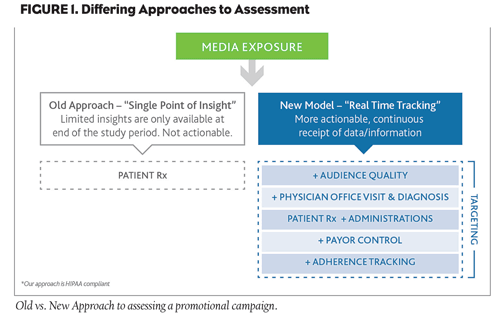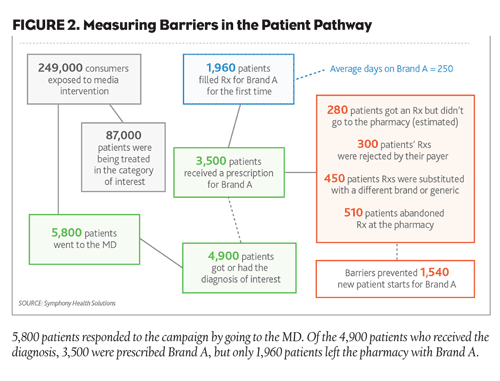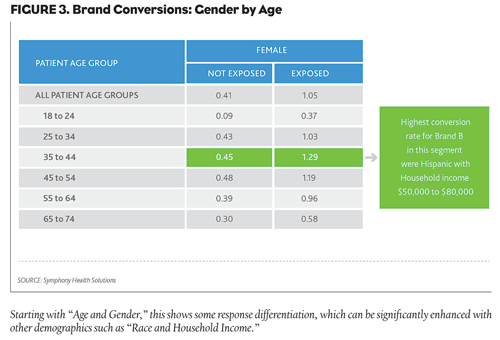Methods to evaluate the promotional effects of DTC programs are progressing rapidly. A new “Patient Pathing” approach advances the insights available to marketers. Traditional methods demonstrate whether or not patient behavior was affected by a particular marketing program or message. New insights deliver unprecedented media effectiveness insights before, during and after a marketing program so that marketers can make adjustments to their programs that will improve ROI.
Without these insights, marketers are rudderless in the water.
Fortunately, a new school of thought has come into play that can help identify the steps that lead a patient to the desired end point and significantly reduce the information gaps often associated with traditional assessment—and can yield better ROI as a result.
Brand conversion can take several months—even longer if the brand is not used for first line treatment. Further, most adherence studies generally look at 12 months of data, or at a minimum six months, to allow for an examination of utilization over time. As budgets get tighter, brand managers need to be more selective and strategic about allocating promotion dollars. Assessment along the patient treatment journey can achieve this by finding ways to be more actionable during this lag time.
DTC program effectiveness measurement has evolved over time. In the early days the measurements were fairly simplistic. They answered questions about proportion of leads converted, length of time to convert and persistency once converted. According to Dave Nussbaum, Senior Vice President, Innovation & Partnerships at Symphony Health Solutions, these newer approaches are far more sophisticated and provide access to many more insights, (see Figure 1) including things like audience quality, physician office visits, diagnosis and payer controls. These insights can help the marketer to understand what messages are working with which patient types—allowing for more precision and in-program adjustments.
In past columns we have talked about measuring along the patient pathway. The concept is that patients take various steps on their journey to manage their disease state, each of which can be measured and assessed along the way. Whereas in the past, traditional measurements looked at a handful of patient events, today’s new “pathing” approach allows marketers to assess incremental impact for much more predictable outcomes—allowing for actionable evaluation of a program and thus the opportunity to optimize outcomes.
A pathing approach can answer questions such as, did my program:
- Drive patients to their doctor or to a specialist?
- Influence the diagnosis rate?
- Drive treatment with my brand or another?
- Help patients overcome barriers?
Of note: we identify barriers that prevent patients from converting. In Figure 2, we applied actual Symphony Health Solutions data to demonstrate several barriers along the pathway. These barriers are shown to have prevented 1,540 new patient starts for Brand A out of a total of 3,500 who received a prescription. By adjusting a campaign in consideration of one or more of these pathway barriers, a marketer has a predictable way to maximize ROI.
Understanding What is Working and With Which Patient Types
We often see measures that tell us whether an entire program worked (e.g., is there a “lift” in utilization for this program?) but what about aspects of the program and different types of patients?
Armed with more granularity, we can better understand patient conversions and how they relate to demographics and campaign activity.
Using other sets of de-identified data, we can further refine a program. While age and gender breakouts provide some measure of program opportunity as seen in Figure 3, the more insightful evaluations will introduce race, household income, education level or other consumer demographics and psychographics. In a recent program optimization, SHS found that Hispanic females age 35 to 44 in households earning between $50,000 and $80,000 had the highest conversion rate for Brand B. If we are looking for ways to focus a campaign, this is one way to drive more predictable results. Armed with a massive anonymous-patient data set pegged to patient demographics allows us to find the “sweet spot,” the high value segments most responsive to our messaging.
Demographics, together with the other new assessment approaches, give marketers insights that provide guidance for more predictable outcomes on current and future program initiatives.









